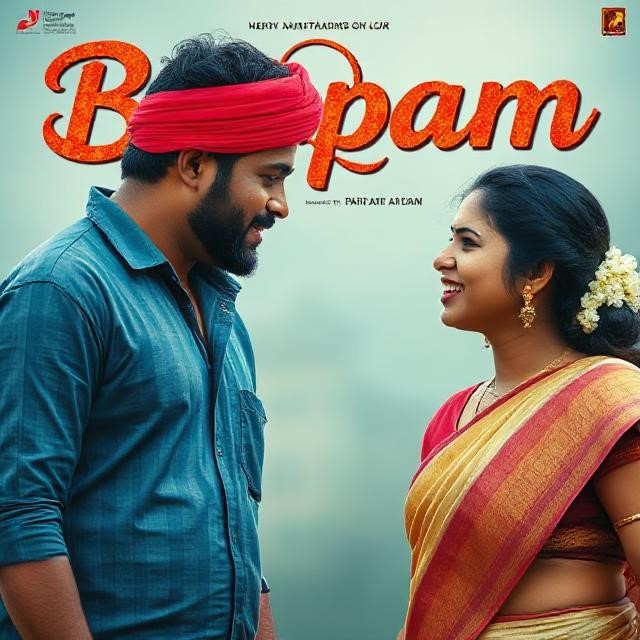South India, with its rich and diverse culinary heritage, has given birth to numerous delectable dishes that have gained popularity across the globe. Among these culinary treasures is “bappam,” a traditional delicacy that has captured the hearts and taste buds of many. This article delves into the origins, preparation methods, cultural significance, and the modern-day appeal of bappam.
The Origins of Bappam
Bappam, also known as appam, is a type of pancake made from fermented rice batter and coconut milk. It is believed to have originated in the Indian state of Kerala, where it is a staple food item, especially in the Christian community. The word “bappam” is derived from the Tamil word “appa,” which means “father” or “lord,” signifying the dish’s importance in religious and festive occasions.
Historically, bappam was prepared in traditional kitchens using stone grinders to create a smooth batter. The batter was then fermented overnight, allowing it to develop a light and airy texture. Bappam was traditionally cooked on a clay or cast-iron skillet called an “appachatti,” which gave it its unique shape and texture.
Preparation of Bappam
The preparation of bappam requires a few simple ingredients: rice, coconut milk, yeast, and a pinch of salt. The process begins with soaking the rice for several hours, followed by grinding it into a smooth batter. Coconut milk is then added to the batter, along with yeast to aid fermentation. The batter is left to ferment overnight, resulting in a light and airy consistency.
To cook bappam, a special pan called an appachatti is used. The pan is heated, and a ladleful of batter is poured into the center. The pan is then gently swirled to spread the batter evenly, creating a thin, lacy edge with a thick, fluffy center. The bappam is cooked until it turns golden brown and crispy on the edges, while the center remains soft and spongy.
Variations of Bappam
While the traditional bappam is a simple rice pancake, there are several regional variations that add unique flavors and textures to the dish. Some popular variations include:
- Palappam: Also known as milk bappam, this variation is made with a richer batter containing coconut milk and sometimes even eggs. The result is a softer and fluffier bappam with a slightly sweet taste.
- Vella Appam: This is a white bappam made without any added spices or seasonings. It is typically served with coconut milk and sugar, making it a popular breakfast dish.
- Kallappam: This variation includes the addition of toddy (a local alcoholic beverage) to the batter, which acts as a natural fermenting agent. The toddy imparts a unique flavor to the bappam and enhances its texture.
- Unniyappam: Unlike the traditional flat bappam, unniyappam is a small, round, and sweet variation made with rice flour, jaggery, and bananas. These bite-sized bappams are deep-fried to perfection, resulting in a crispy exterior and a soft, chewy interior.
Cultural Significance of Bappam
Bappam holds a special place in the culinary traditions of Kerala and is often associated with religious and festive occasions. In the Christian community, bappam is an integral part of festive feasts, especially during Christmas and Easter celebrations. It is commonly served with a variety of accompaniments, such as vegetable stew, chicken curry, or fish molly.
In addition to its significance in Christian festivities, bappam is also enjoyed by people of all communities in Kerala. It is a popular breakfast item and is often served in traditional Kerala meals, known as “sadhya,” during weddings and other celebrations.
Modern-Day Appeal of Bappam
In recent years, bappam has gained popularity beyond the borders of Kerala, finding its way into the hearts and kitchens of food enthusiasts across India and around the world. Its unique texture, delightful taste, and versatility have made it a favorite among those who appreciate traditional South Indian cuisine.
With the advent of modern kitchen appliances, the process of making bappam has become more convenient. Electric grinders and non-stick appachatti pans have simplified the preparation, allowing more people to enjoy this delicious dish without the hassle of traditional methods.
Moreover, bappam has also inspired innovative culinary creations. Chefs and home cooks have experimented with various fillings and toppings, transforming the humble bappam into a gourmet delight. From savory fillings like spiced minced meat and vegetables to sweet toppings like chocolate and fruit compotes, the possibilities are endless.
Health Benefits of Bappam
Apart from its delicious taste, bappam also offers several health benefits. The fermentation process enhances the nutritional value of the dish by increasing the bioavailability of nutrients and promoting the growth of beneficial probiotics. Fermented foods like bappam are known to aid digestion, boost the immune system, and improve gut health.
Additionally, bappam is made with rice and coconut milk, both of which are gluten-free ingredients. This makes it an excellent option for individuals with gluten intolerance or those following a gluten-free diet.
Conclusion
Bappam is more than just a pancake; it is a culinary masterpiece that embodies the rich cultural heritage of Kerala. From its humble origins in traditional kitchens to its modern-day adaptations, bappam has remained a beloved dish that continues to delight food enthusiasts around the world. Whether enjoyed as a breakfast treat, a festive delicacy, or a gourmet creation, bappam is a testament to the timeless appeal of South Indian cuisine.
So, the next time you crave a taste of South India, why not whip up a batch of bappam and experience the magic of this delightful dish?
